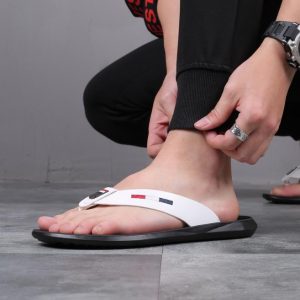Designing slides for accessibility means creating presentations that are inclusive and can be easily accessed and understood by all users, regardless of their abilities or disabilities. Making your slides accessible ensures that everyone, including people with visual or hearing impairments or cognitive differences, can fully participate in and benefit from your presentation. Here are some tips for designing accessible slides:
- Use Clear and Readable Fonts: Choose fonts that are easy to read, even at a distance. Avoid decorative or script fonts and opt for simple, sans-serif fonts like Arial, Calibri, or Helvetica.
- Provide Sufficient Contrast: Ensure there is enough contrast between text and background colors. A high contrast makes it easier for users with low vision to read the text.
- Use Descriptive Slide Titles: Give meaningful and descriptive titles to each slide. This helps users with screen readers to navigate through the presentation more effectively.
- Add Alt Text to Images: Include descriptive alt text for all images. Alt text provides a text alternative to images for users with visual impairments, allowing them to understand the content.
- Avoid Using Color Alone for Meaning: Avoid conveying important information solely through color. Use text or symbols in addition to color to ensure that everyone can understand the content.
- Provide Transcripts and Captions: If your presentation includes audio or video content, provide transcripts for audio and captions for video. This helps users with hearing impairments to access the information.
- Create Simple and Consistent Layouts: Keep your slide layouts simple and consistent. Avoid clutter and unnecessary animations that may distract or confuse users.
- Use Proper Heading Structure: Use heading styles (Heading 1, Heading 2, etc.) to organize content logically. This helps screen readers and users with cognitive differences to navigate through the slides.
- Avoid Automatic Slide Advancements: Allow users to control the pace of the presentation. Avoid automatic slide advancements, as it may not give users enough time to process the content.
- Test for Accessibility: Use accessibility tools and screen readers to test your slides for accessibility. Make necessary adjustments to ensure full compliance.
- Offer PDF or Text Versions: If sharing slides as handouts or resources, consider providing a PDF version with accessible features like tagged headings and alt text.
- Provide Contact Information: Include your contact information or email address in case users need additional support or accommodations.
By designing slides with accessibility in mind, you create an inclusive and welcoming presentation environment that accommodates all users, regardless of their abilities. Making presentations accessible is not only a legal requirement in many cases but also a moral responsibility to ensure equal access to information and opportunities for all individuals.


















